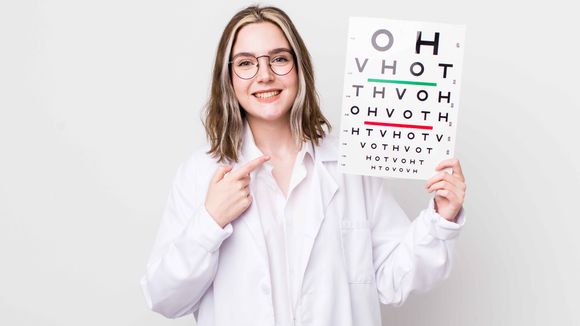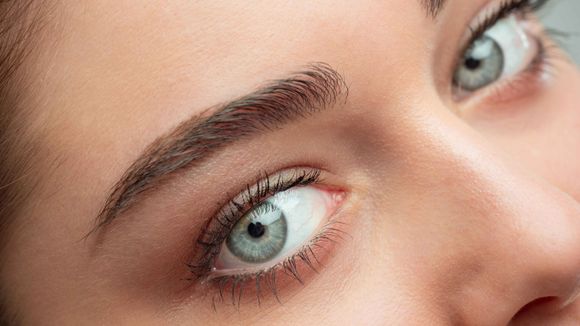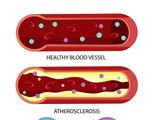Why vision is extremely important
Our eyes receive light from the world around us and send visual information to the brain. The eyes can see at about 200 degrees in all directions, including in front of you and on the side (peripheral vision). Parts of your eyes work together to allow you to see images, movement, and depth.
Did you also know that our eyes are adapted to see about 7 million shades of color? About 80% of the information from our surroundings that reaches the brain comes from them. The visual cortex is located at the back of the brain and is the main part that receives, integrates and processes visual information that the retina of the eye transmits.
Many conditions can affect eye work, including common vision problems such as myopia (myopia), astigmatism, and eye injuries. Several diseases and disorders that are not necessarily related to the eyes can cause problems with them, including autoimmune diseases, diabetes, and high blood pressure. [ref. 1]
Components of the human eye
The different components of our eyes are:
- Iris - the colored area of the eye. Depending on the color of your eyes, the iris can be in any shade of blue, green, hazelnut or brown.
- Cornea - a transparent layer that extends over the iris. Water and collagen make up the cornea. And the tears protect the cornea and keep it well lubricated.
- Pupil - the black circle that is in the middle of your iris. It expands and shrinks to control how much light enters the eye.
- Sclera - the white parts of the eye that surround the iris.
- Conjunctiva - a clean, thin fabric that covers the sclera and outlines the inside of the eyelids.
- A lens that sits behind the pupil. It focuses the light that enters your eye and sends light to the back of the eye.
- Retina - a set of cells that cover the inner part of the back of the eye. Part of your nervous system, the retina senses light and converts it into electrical impulses or neural signals. The retina has sticks (cells that help you see in low light) and cones (cells that recognize color).
- Macula - a small area that is part of the retina. It is responsible for central vision and helps you see fine details and color.
- An optic nerve that's behind the retina. It carries signals from the retina to the brain, which then interprets this visual information to tell you what you see.
- Muscles controling the position and movement of your eye, how much light enters the eye, and the ability of the eyes to focus.
- Vitreous body - a transparent gel that fills your entire eye. Protects and maintains the shape of the eye.
Health conditions affecting the function of the eyes
There are hundreds of conditions, disorders, diseases, and injuries that affect the eyes. This is another reason to act preventively against them, and not to seek solutions only when they are present.
Conditions that affect the eyes include:
- Age changes in vision: Your eyes change with age. In some cases, cataracts, macular degeneration, or detached retina may occur. Presbyopia (loss of close focal vision) usually begins to affect people around the age of 45.
- Cancer: Tumors can be the result of intraocular melanoma and retinoblastoma.
- Diseases: Many types of eye diseases can affect the eyes, including congenital (available at birth) cataracts, glaucoma and optic atrophy.
- Infection and irritation: conjunctivitis, blepharitis, barley, and dry eyes cause redness, swelling, and discomfort. Eye tearing can be obtained when the eye does not drain tears properly or the eyes are irritated or dry.
- Hereditary diseases: pigment retinitis is an inherited condition that can lead to blindness.
- Injuries: Corneal abrasion and detached retina can be the result of an eye injury. Accidents can cause bleeding from the eyes and irritation. Foreign objects can also damage the eye.
Symptoms of eye diseases - how to recognize signs
There are various signals that indicate eye problems, for example:
- Eye pain, redness, swelling, bleeding, or secretion.
- Eyes that cross or point in different directions.
- Eyes that are itching or very dry.
- Flashes of light, especially in peripheral vision.
- Headaches and squint.
- Inability to move the eyes or open or close the eyelid.
- Lots of spots or one dark spot in the middle of the field of vision.
- Sensitivity to light or vision problems in low light.
- Changes in vision, including cloudy or blurred vision
Living and working in front of a computer screen - what are the risks
Most people know that the sun can hurt our eyes, but they are not aware of any other problematic bright lights emitted by computer screens. In short, these screens are much less harmful than the sun. This is because screens are not as bright as the sun, and newer screens usually do not produce UV rays - the most harmful kind of light the sun emits. Instead, the most important light that screens produce is high-energy blue light with a short wavelength.
In the short term, blue light is mostly associated with potentially causing eye strain. [ref. 2] According to the American Optometric Association, this is not usually a serious problem and can mostly be solved by usually shifting your gaze from the screen, as well as more time out in the wild.
In the short term, it is known that staring at screens for a long time causes computer vision syndrome. This condition can be irritating and even detrimental to a person's work and daily activities. Potentially cause:
- Severe headache.
- Eye strain.
- Blurred vision.
- Dry eyes.
This syndrome is not actually caused only by exposure to blue light; it is caused by a combination of factors. The first factor is the duration of exposure, i.e. exposure to a screen. At least seven hours in front of the screen, we can talk about prolonged exposure. The problem is compounded by the fact that many people, unfortunately, have a habit of maintaining a bad posture while staring at the work screen.
There is something to be done to avoid this problem with vision during prolonged operation of a computer:
- There are many tables and articles online with instructions on how to properly sit in front of your computer. Posture and proper distance from your PC can really help reduce eye strain. Although you may not notice an immediate difference, you will feel the effect of good posture and ergonomics over time. Important are the distances of the chair from the floor, on the desk, the corners under which your legs and elbows will sit, do you have lumbar support, and others.
- Try to choose lights for your workspace or home properly so that the level of light in the room is approximately equal to how much light your screen will produce. Contrasting levels of light, such as being in a dark room while looking at a bright screen, can load the eyes faster.
- Practice the rule 20-20-20. This simple rule can help with eye strain. All you have to do is take a break every 20 minutes to stare at an object about 20 meters away for at least 20 seconds. This helps to give your eyes a break by focusing on a bright screen that's near you.
When working from home
After the global coronavirus pandemic, a huge number of people switched to a home or hybrid model of work. This implies even more time in front of the computer screen for appointments and tasks. Therefore, we recommend:
- Frequent screen breaks throughout the day.
- Walk around the room or building every 20 minutes.
- Mute notifications from mobile devices to spend less time staring at them.
- Use of moisturizing eye drops or artificial tears.
Some studies have suggested that in the long run, blue light from screens can also damage retinal cells, leading to problems such as age-related macular degeneration. The extent of this problem is not fully understood, but prevention is the best solution, and may include a complex of measures. We'il describe them next.
Eye health with the right foods and exercises

Being proactive about eye health will pay off over time. Therefore, the most important steps are:
- Regular consumption of vegetables – leafy dark greens are the most suitable.
- Protect the eyes – at work, sports, going outside – with the right glasses will protect the eyes. If you are swimming, you can also put on glasses. When walking, ordinary dioptric sunglasses are suitable. When riding a bike, there is a specific type of glasses.
- Wear sunglasses – UVA and UVB rays are just as harmful to the eyes as they are to the skin.
- Observe good hygiene – wash your hands before touching your eyes. Whether you are putting on contact lenses, trying to remove an eyelash, or just having a slight irritation, it is important to wash your hands thoroughly before making physical eye contact.
- Maintain a healthy body – Your eyes are part of your body, so it makes sense that they are affected by other unhealthy habits. Proper nutrition, maintaining healthy body weight and regular physical activity help your eyes stay in good condition. Nutrients such as lutein and zeaxanthin, vitamin C, vitamin E and zinc, and vitamins A and E are among the most important to your eyes.









